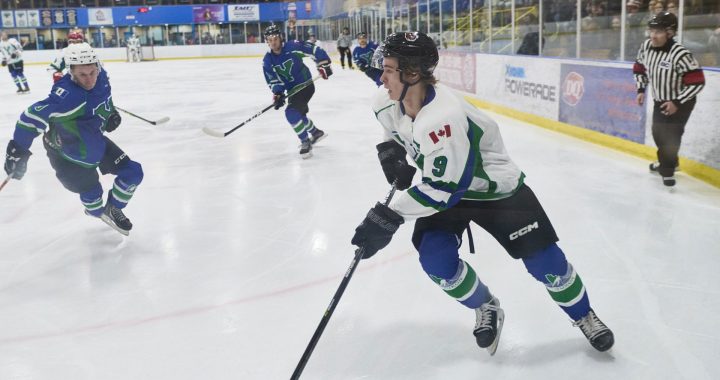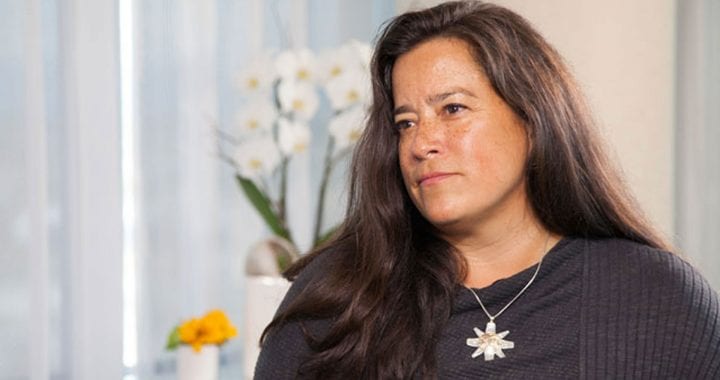Nelson House, home to the Nisichawayasi Nehethowuk, sits along the north shore of Footprint Lake, about 700 kilometres north of Winnipeg, 500 from Hudson Bay, and at the convergence of the Footprint, Rat and Burntwood Rivers.
For the members of Nisichawayasihk Cree Nation (NCN), it’s also the epicentre of one of the greatest events to impact their identity and way of life.
Their ancestors have made the lands around the convergence of the three rivers their home for thousands of years, where they fished the bountiful waters and hunted and trapped the vast, hilly landscape.The local land-based economy evolved through settlers’ expansion into the area, which included the establishment of North West Company and Hudson Bay trading posts in the region in the late 1700s and early 1800s.
One hundred years later a Roman Catholic day school was built, one run by individuals who locals have claimed in recent years sexually abused them. The school was part of the church and state’s wider effort to assimilate Indigenous children into Canadian society.
Despite the disruptions to their lives, the Nisichawayasi Nehethowuk still hunted and fished for themselves, their families, kin and community well into the 20th century.
But in the 1970s hydro development posed a new threat.
One that didn’t target the people, or animals, but rather the thing the people and the animals depend on — the water.
Displaced by Hydro
Carol Kobliski is 53 years old. She grew up on a small island in the middle of Footprint Lake and remembers the day Manitoba Hydro showed up at the door.
“They came to our cabin and told my mom and dad they had to move off the island,” she recalled in a recent phone interview with APTN News.
Kobliski said her family was offered $2,000 for the loss of their home, and that five other families in the area were forced to relocate to accommodate Hydro’s massive re-engineering of the lands and waters of the region — the Churchill River Diversion (CRD).The CRD effectively increased the output of water from the Churchill River system into the Nelson River.
The Missi Falls control structure near South Indian Lake and the Notigi control structure just west of Nelson House control the flow of water out of the Churchill and into the Rat and Burntwood Rivers, which eventually flow into the Nelson. But along the path of these human-made channels and control structures are communities like Nelson House.
And families like Kobliski’s.
“We all had to move back on to the reserve with no home, nowhere to live, and we were scattered all over the community with relatives,” she recalls. “That’s how I grew up.”
Everything we ate came from the land
Nelson House is also home to Ramona Neckoway, who has been leading the Wa Ni Ska Tan alliance’s sixth annual tour of hydro-impacted communities and helping her people network and learn how hydro development has affected others in the region.
Wa Ni Ska Tan means, “to wake up, or to rise up” in Cree, she explained to APTN on the first day of the trip.
As such, a big part of the group’s mandate is not only research-oriented, but also advocacy and solutions-oriented, she said.
Wa Ni Ska Tan, in working with community members, is exploring ways to help understand and mitigate the impacts of hydro development, whether it’s through funding research or land-based activities in communities, or hosting letter-writing events.
At the tail-end of their trip north, Neckoway brings her Wa Ni Ska Tan colleagues to Nelson House.
She grew up after the CRD so doesn’t know what it was like to have access to clean drinking water straight out of the lake.
Standing on a dock behind her auntie’s house on the edge of the community, Neckoway tells the story, secondhand, of how her family members used to come down the bank to fetch water. Now, she says, her mother, aunties and uncles spend as much time as possible at their family’s camp on the other side of the lake.
She’s getting ready to take the Wa Ni Ska Tan crowd there.
But before she does, she humbly but honestly shares one reservation she’s having.
“I don’t want us to be victimized,” she says somewhat hesitantly, referring to the way media often portrays Indigenous peoples and how those representations are often then internalized. “It doesn’t do us any good if we’re in the [victim] mindset. We need to empower ourselves.
“And we need people to respect fundamentally that relationship and those views that the elders have about the land and the environment. There’s a reason why people are so upset here.”
Moments later we board a small boat and head across Footprint Lake to the camp.
A small log cabin sits about 150 feet in the woods back from the shore. Out front a large wooden deck where three of Necokway’s aunts and two uncles sit chatting with one another and drinking tea. They’ve prepared a meal of fresh whitefish, pickerel and jackfish, fried bannock and coleslaw.
Edward Linklater tells APTN a story similar to the ones we’ve heard in other hydro-impacted communities: The water used to be clean, drinkable; the lakes were safe and navigable; the fishing and hunting were bountiful; the people were happier than they are now.
But now, he explains, going out on the water is risky, and fishing isn’t feasible for most.
The separation of the people from their land and waters has brought grave consequences.
We are losing our language,” Linklater says. Youth have access to Cree language programs in the school, but it’s not the same as land-based learning, he explains.
“Even if they speak it, I can’t understand them.”
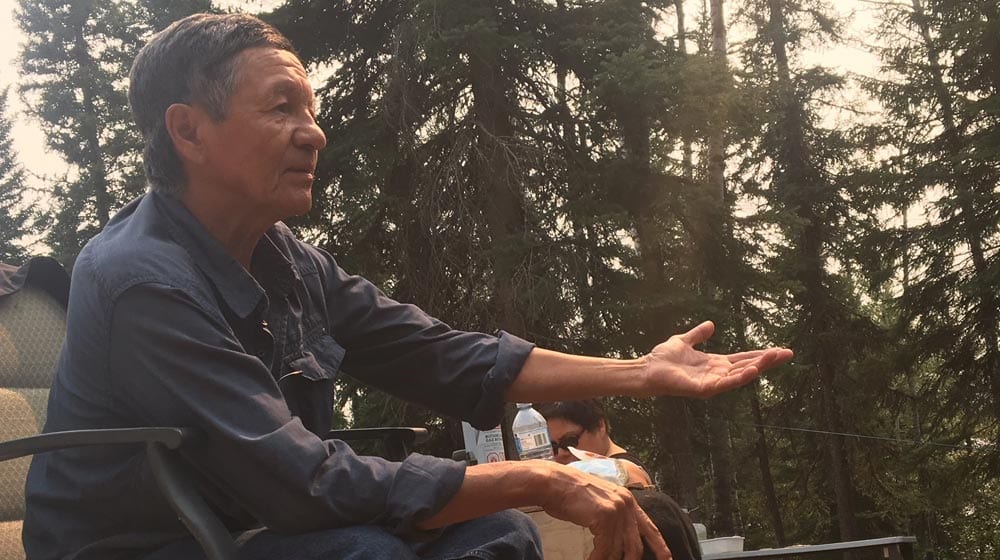 Elder Edward Linklater, Ramona Neckoway’s uncle, says the separation of his people from the land and water due to hydro development has contributed to the loss of their language. Photo: Justin Brake/APTN News
Elder Edward Linklater, Ramona Neckoway’s uncle, says the separation of his people from the land and water due to hydro development has contributed to the loss of their language. Photo: Justin Brake/APTN News
Linklater also recalls deaths in the community he attributes to changes in the waters due to hydro.
A boat two of his friends were in, both of them fishermen, capsized years ago.
“The current was so strong, the boat couldn’t handle it,” he says. “Other people were swept away and their bodies were never found.”
Neckoway’s aunt Nina says she wants people in southern Manitoba and Minnesota, who create demand for and consume the energy Manitoba Hydro generates in the north, to know the true cost of power.
She says there was a time when “money didn’t matter” to her people. “Everything we ate came from the land.
But now all the animals are getting sick from the pollution,” she adds, explaining they don’t even eat fish from their own lake due to concerns of mercury.
Now they have to travel out of the community to get their fish.
Neckoway says hydro development forced her people out of their traditional economy and into one that has had a negative impact on their well-being.
“Maybe capitalism, so to speak, is part of the problem,” she says.
While they appreciate the “modern amenities” and want opportunities, she says, “I kind of don’t feel that it should come at the expense of the environment.”
Desecration of a sacred site
Neckoway’s family take the Wa Ni Ska Tan members across Footprint Lake to the place where the lake got its name, and also to illustrate how Manitoba Hydro and the province regard the Cree in their pursuit of energy and profits.
We arrive at a cliff on the north shore of the lake, not far from the community.
As the boat approaches the cliff two circles embedded in the rock come into sight. Inside each circle is what appears to be shape of a footprint.
Nisachawayasihk Elder Donald Hart tells the story of Wisahkecahk and how the Cree cultural hero came to leave his footprints on the side of the rock cliff that once rested above the water.
But when Manitoba Hydro informed the Nisichawayasi Nehethowuk that the water levels in their lake would rise drastically, there was little regard for the footprints despite concern from elders in the community.
In 1976, with the inundation of Footprint Lake, Wisahkecahk’s footprints were underwater.
Elders continued in their distress over the desecration of the sacred site, and in 1977 the footprints were cut from the submerged rock face and transported to a museum in Winnipeg. The following year they made their way back to the community, where they were put on public display.
It would be a few more years before elders and the community, still unsettled by the flooding and subsequent removal of the footprints, would have the footprints returned to their place on the side of Footprint Lake.
“They wanted them back, the people,” Hart explains, “because they figured it might be cursed over there [in the community], you know.”
The large piece of rock once cut from beneath the water now sits atop the cliff. And Wisahkecahk’s footprints have been removed from that rock and embedded back into the rock face 10 or 20 feet above their original location, above water.
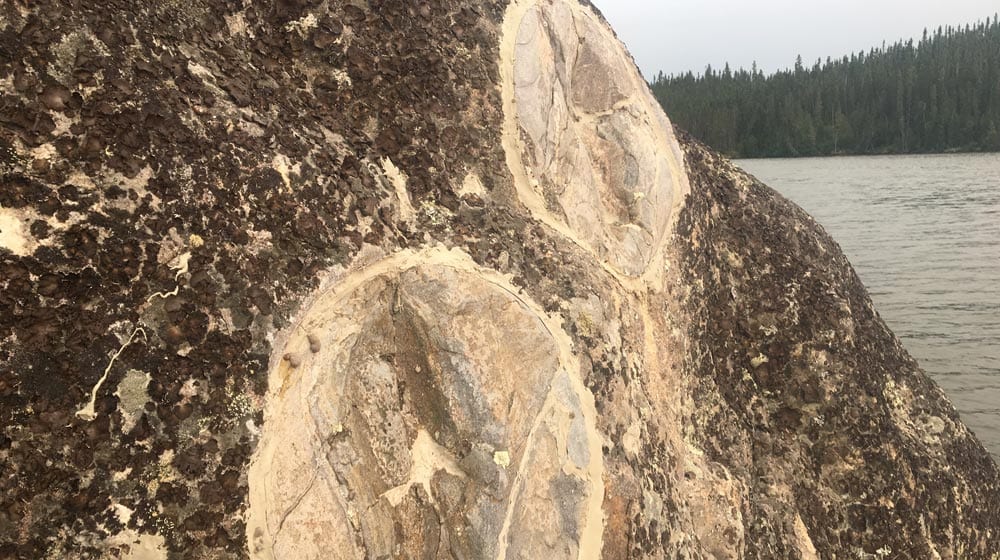 The footprints of Wisahkecahk were flooded by Manitoba Hydro in the 1970s, then removed from their original location and put in a museum before being re-embedded into a new piece of rock. Photo: Justin Brake/APTN
The footprints of Wisahkecahk were flooded by Manitoba Hydro in the 1970s, then removed from their original location and put in a museum before being re-embedded into a new piece of rock. Photo: Justin Brake/APTN
In the woods about 50 feet beyond the cliff is the frame of a sweat lodge.
Hart says people from his community return to the site for prayer and ceremony.
Peter Kulchyski, a professor of Native Studies from University of Manitoba who helped launch Wa Ni Ska Tan and the visits to hydro-impacted communities, likens Manitoba Hydro’s flooding and desecration of the footprints to the demolition of the Sistine Chapel.
“They took one of the most sacred sites in the province and they ripped it out and travelled it around, and eventually sent it back to the site, though much higher up than they were,” he later tells APTN by phone. “I think that shows a brutal disregard for the cultural heritage of the Nehethowuk people.
“We pay lip service to freedom of religion, but actually Aboriginal spirituality apparently doesn’t count when it comes to freedom of religion and we will affect religious sites for money, and have done so.”
New relationships, same results
Manitoba Hydro says it has changed its ways since the days of forcing Indigenous people from their homes and flooding their ancestral lands.
While they declined an interview for this series, Hydro spokesperson Bruce Owen told APTN by email that “much has changed in Manitoba and Canada from [that] time period.
“More stringent environmental regulations and licensing requirements are in place today than 50-60 years ago…[which] ensure that all our projects minimize their impact on the natural environment and the people who live there.”
The Wuskwatim and Keeyask dams, Owen says, were “developed in partnership with local communities, who have the opportunity to participate in the planning of the projects and to have an equity stake in these projects should they so choose.”
But Kobliski says that as a result of Nisichawayasihk’s partnership on Wuskwatim, a 200-megawatt $1.3 billion dam built near Nelson House, her community is facing tens of millions of dollars of debt—to Manitoba Hydro, nevertheless—and no guarantee of a return on their investment.
In 2006, after almost a decade of negotiations, Nisichawayasihk signed the Wuskwatim Project Development Agreement (WPDA) with Manitoba Hydro, which gives the First Nation a 33 per cent partnership on the 200-megawatt dam.
The cost to NCN was $28 million plus a $56 million loan from Manitoba Hydro itself, to be paid back out of anticipated future profits. But project cost overruns, the U.S. financial crash of 2008 and a decreased demand for export energy have pushed any possibility of windfall profits for NCN into the future.
The deal between NCN and Hydro has since been amended twice to protect the community from bearing the immediate financial burden of paying more due to the unforeseen circumstances. But Kulchyski says NCN is “sinking deeper into debt,” and that the restructuring of the agreements were done without community votes.
“They’ve just been done between [the] utility and the band council,” he says.
Kobliski says the people in her community have not given their free, prior and informed consent to the agreement because “there wasn’t any proper consultation” with the restructuring.
She says she’s been seeking answers from Chief Marcel Moody and council, but to no avail.
APTN reached out to Moody for comment but did not receive a response by the time of publication.
“No matter what we ask around here it falls on deaf ears,” Kobliski says. “We never get a response back. And it’s been like this for many, many years.”
Kobliski also says that not only have living conditions in her community not improved since the band struck the deal with Hydro — they’ve gotten worse.
That includes taking into account the $56 million implementation agreement Hydro settled with NCN in 1996 to compensate for the harm caused by the Churchill River Diversion in the late ‘70s.
“Ever since 1996, since the money came into our community…we’ve been having a lot of social problems in our community,” she explains. “It was escalating to the point where gang members were coming in here selling drugs.
“We’ve had a lot of violence in our community, a lot of domestic violence, suicide, sexual assault,” she continues, adding that “for the past 10 years it’s been really bad.”
Kobliski is a First Nation safety officer for the band. She’s one of 16 officers who work with the RCMP in the community of 2,500, she says.
She insists that as someone who checks vehicles coming into the community to enforce alcohol limits she has special insight into how her people are doing in the wake of NCN’s deals with Manitoba Hydro.
“I grew up in a community where there was not much alcohol…and now there’s cocaine, there’s crystal meth, there’s marijuana, there’s ecstasy — there’s so much,” she says. “And the violence that we’re seeing in the community, it was so rapid. It’s almost like there’s a crisis going on here. The way I see it, where the money goes, the drug dealers are going to follow the money.”
Kobliski says trust money from NCN and Hydro’s 1996 implementation agreement has funded important programs in the community and helped build infrastructure.
In 2015, Moody told the Winnipeg Free Press, in an interview about restructuring the Wuskwatim deal, that the band is, in fact, dependent on its deal with Manitoba Hydro to compensate for lack of federal support.
“We have no funding at all from the federal government to deal with housing and infrastructure,” he said, explaining his “philosophy has always been that if the government isn’t going to help us we’re going to have to do it ourselves.”
But Kobliski points to the community’s drug and alcohol treatment centre—and now a women’s crisis centre currently under construction—as further indicators the prosperity promised by hydro development has not come.
She says there have been issues with drinking water in the community, and that some have fallen ill. Some, like herself, don’t drink the water because they don’t trust it.
She recalls a childhood memory of elders gathered in her grandfather’s home.
“I remember him saying to the elders there that one day we will be buying water in water bottles. I used to wonder what he was talking about, and now I see it.”
Kobliski travels 75 kilometres to Thompson every week or two to buy bottled drinking water, something not many community members can afford to do, she says.
“The only time we use water that’s coming from Nelson House is to shower with, and to wash our clothes, and to clean our house.”
She says her people “were fine the way we were” prior to hydro development in the region. “Everybody helped one another. Nobody had to lock their doors. We didn’t have to worry about our children.
“And now it’s like everybody’s fighting to survive here. Nobody’s looking out for anybody anymore. There’s so much fear. We’re living in fear of one another,” she continues, laying part of the blame on the band’s leadership. “It’s sad because the way our leaders made it sound when this project was coming through: we’re going to have this, we’re gonna have that, we’re gonna prosper. Well, why are our people still living in poverty? Why are our homes still full of mould?”
Kobliski also warns that Manitoba Hydro’s messaging about corporate responsibility and First Nation partnerships is deceptive.
“It looks good on the outside — they’re painting a good picture of the partnership, but inside the communities we’re all suffering,” she says.
This is our territory
Back on her auntie’s dock in Nelson House, Neckoway is clear that her people don’t need sympathy, “because we can confront and contest what’s going on in a dignified way.”
But first that requires a public discussion and understanding of the true nature of hydro development in her territory.
“My aunt used to tell me stories of my grandfather chasing away surveyors and people at Wuskwatim [Lake] in the ‘50s,” she says. “So my mom grew up as they worked there.
“And then I was born into the Northern Flood Agreement, my daughter was born into the implementation agreement, and then my grandson inherited the [Wuskwatim] agreement.”
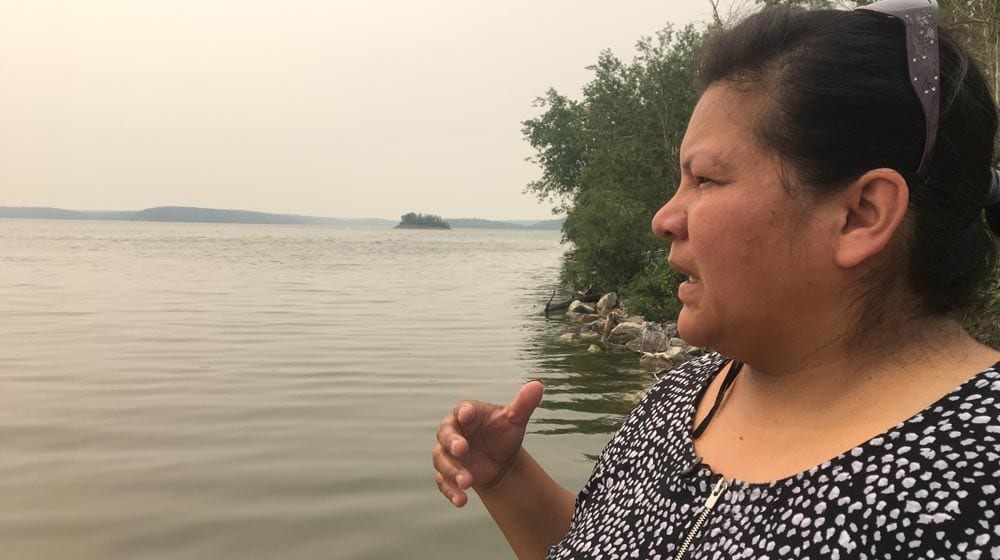 Ramona Neckoway says Nisichaswayasihk Cree Nation’s agreements with Manitoba Hydro over the past 40 years “just keep getting worse and worse despite the narrative that this is an opportunity to be self-determining and self-governing.” Photo: Justin Brake.
Ramona Neckoway says Nisichaswayasihk Cree Nation’s agreements with Manitoba Hydro over the past 40 years “just keep getting worse and worse despite the narrative that this is an opportunity to be self-determining and self-governing.” Photo: Justin Brake.
“So those four generations, each of them has had their own experience,” she continues. “But three of four of them have inherited—been born into—these realities where each generation has their own agreement.
But the agreements “just keep getting worse and worse despite the narrative that this is an opportunity to be self-determining and self-governing. I don’t buy that rhetoric, and I continue to be so opposed to this model that was used up here.
“This is our reality, and the fact that you’ve got 40 years worth of agreements, 40 years worth of promises, and we’re not getting any better…now I think we can actually talk about the social consequences of what’s going on,” Neckoway continues. “And to me that’s tied to the loss of land, and the dispossession of culture, of land, of territory, of connections, kinship.”
Neckoway points up to the houses on the reserve.
“There’s a colonial context behind that,” she says. “This was where people came for church and school, [but] they lived in camps.
“People have bought into this idea that this Indian reserve is our boundary — but out boundary is out there,” she continues, pointing across the green waters of Footprint Lake at the hills beyond.
“This is our territory. The history’s out there. I can feel my ancestors out here, I can feel that connection.”





